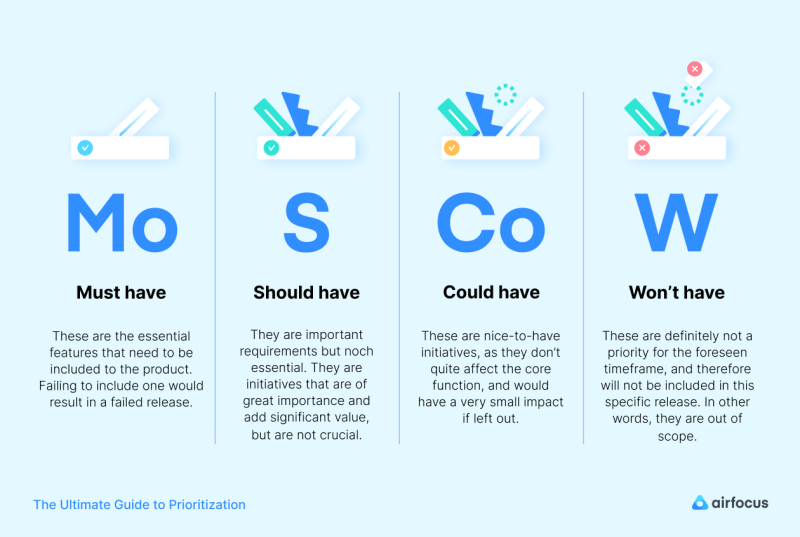
What's the one word that can keep product managers up at night?
Backlog.
Yes, everyone acknowledges the backlog as a critical tool, yet it's often the most mismanaged and misunderstood aspect of product management.
A well-maintained backlog not only streamlines product development but also aligns perfectly with strategic goals, boosting team productivity. On the other hand, a neglected backlog can lead to confusion, burnout, and inefficiency, transforming teams into mere feature factories. We recently had the pleasure of hosting top PM voice David Pereira for a webinar titled "How to Break Free From the Backlog Trap." During this insightful session, David highlighted the dynamic nature of backlogs, and the pitfalls to avoid, and shared strategic approaches to managing backlogs effectively. In this article, we’ll walk you through the practical and actionable strategies David discussed.
You can watch the full video here.
Let's start!
TL;DR
Backlogs are essential but often mismanaged in product management.
Common issues include overly long, outdated, or stakeholder-driven backlogs.
Effective management strategies include regular refinement, value-based prioritization, limiting active tasks, clear completion criteria, stakeholder engagement, and using tools.
Aim to transform the backlog into a strategic asset for aligning product development with business goals.
Understanding the product backlog
The product backlog is essentially a list of tasks, features, and improvements that product teams use as a roadmap for product development. It's dynamic and constantly evolving based on feedback, market changes, and team insights. However, without proper management, the backlog can grow unwieldy and counterproductive.
Common pitfalls in backlog management
The longer the backlog is, the less agile you can be.
1. Extensive backlog: A backlog that is too long can be overwhelming and difficult to prioritize effectively. It can lead to decreased visibility and increased complexity, making it hard for teams to focus on what's truly important.
2. Focusing on what stakeholders want, not what users need: In this scenario, it's like you are approaching the backlog like a waiter taking the order from the stakeholders. The problem here is that you don't understand the "why". As a PM you are not supposed to get the requirements, you are supposed to understand what they are for and find solutions that are worth building and deliver value.
3. Outdated backlog: keeping outdated items in the backlog can lead to confusion and wasted resources. It's crucial to regularly review and update the backlog to ensure all items are relevant and aligned with current objectives.
4. Overloaded, disconnected backlog: When you have many items that can't come together, this is a sign that your backlog is disconnected and you can't maximize value with a disconnected backlog.
5. Solutions without problems: If you are solving problems that don't exist, you are probably creating problems out of thin air.
Strategies for effective backlog management
1. Regular backlog refinement
Regularly refining the backlog is essential to keep it manageable and relevant. This involves reviewing and prioritizing items, removing outdated tasks, and ensuring alignment with the latest business goals. Refinement should be a continuous process, involving key stakeholders and team members to ensure buy-in and alignment.
2. Prioritization based on value and impact
Prioritize backlog items based on their potential value and impact on the product and customers. This requires a deep understanding of customer needs and business objectives. Techniques such as weighted scoring or the MoSCoW method (Must have, Should have, Could have, Won't have) can be useful in prioritizing tasks effectively.

3. Limiting work in progress
Limiting the number of active tasks in the backlog can help teams focus and deliver more effectively. This practice, often associated with Agile methodologies like Kanban, ensures that teams are not overwhelmed and can concentrate on completing tasks to the highest quality.
4. Clear definition of done
Define clear criteria for when a backlog item is considered complete. This prevents tasks from lingering in the backlog and ensures that everyone has a shared understanding of what completion looks like. Clear definitions help maintain quality and ensure that all necessary steps are taken before a task is moved to done.
5. Stakeholder engagement
Engage stakeholders regularly to ensure that the backlog reflects the needs and priorities of the business. This includes regular check-ins and feedback sessions with stakeholders to discuss the backlog's status and any adjustments needed based on shifting priorities or market conditions.
6. Use of backlog tools
Leverage tools and software designed for backlog management, such as Jira or Trello. Especially if you have a product management platform where these tools can be integrated (like airfocus). These tools can help organize, prioritize, and visualize tasks, making it easier for teams to manage their workload and for stakeholders to understand the development progress.

Conclusion
Effective backlog management is crucial for the success of product development teams. By regularly refining the backlog, prioritizing tasks based on value, limiting work in progress, defining clear completion criteria, engaging stakeholders, and utilizing appropriate tools, teams can ensure that their backlog is a powerful tool for achieving product success.
Backlog items age like milk, not like wine!
The main thing to keep in mind is that the goal is not just to manage the backlog but to use it as a strategic asset that drives product development forward in alignment with business goals.

Nouran El-Behairy

Read also



Experience the new way of doing product management

Experience the new way of doing product management



